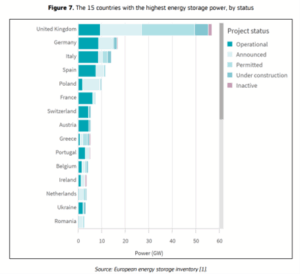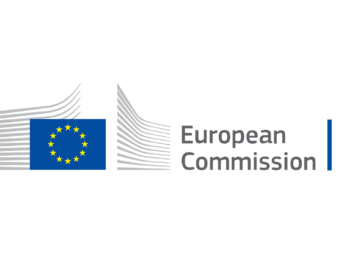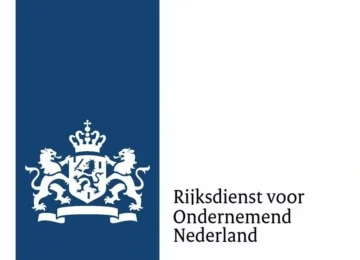Compliment of the month: European Commission sees storage capacity grow to 171 GW
In the ‘compliment of the month’ series, we want to highlight a stakeholder who is trying to accelerate the implementation of energy storage in their own way. For the month of November, our compliment goes to the report ‘Overview of Energy Storage Deployment in Europe’ by the European Commission, prepared by the Joint Research Center. The report provides an up-to-date and in-depth overview of the rollout of energy storage in Europe, the policy frameworks, and the challenges and opportunities for member states such as the Netherlands.
European developments: rapid growth, but also challenges
Europe is at a tipping point in the rollout of energy storage. A total of 2,356 energy storage projects have been identified, representing a combined capacity of nearly 171 GW. Of these, 70 GW are operational and 97 GW are expected to be operational by 2030. These figures show that there is a large pipeline of projects and that investors have confidence in the market. However, there are also challenges: the implementation of policy and the removal of market barriers are not progressing at the same pace everywhere.
The report makes it clear that pumped-storage hydropower (PSH) still makes the largest contribution to installed capacity. At the same time, lithium-ion batteries are rapidly gaining ground and account for the majority of planned new installations. This reflects the growing confidence in batteries as a flexible and scalable solution for integrating renewable energy.

Trends and developments in member states
There are significant differences between Member States. Countries such as the United Kingdom, Germany, Italy, and Spain are among the frontrunners in terms of installed capacity and planned projects. The UK, for example, has a strong pipeline of battery projects, thanks in part to a well-functioning regulatory framework and an active market for ancillary services. Germany is investing heavily in long-term storage (LDES) and stimulating innovation through public consultations and subsidies. Greece has successfully introduced auction mechanisms for battery storage, which has led to competitive prices and rapid roll-out. In Southern Europe, particularly Spain and Portugal, pumped hydro plays a major role in grid flexibility.
The report shows that most Member States now include energy storage in their National Energy and Climate Plans (NECPs), but only a minority have set concrete targets. This lack of clear targets and fragmented regulations is holding back the rollout of storage. The European Commission therefore emphasizes the importance of national strategies, faster permitting, and the removal of market barriers such as unequal network tariffs and slow procedures.

The position of the Netherlands within Europe
The Netherlands ranks in the middle when it comes to installed storage capacity. Our country has an attractive investment climate due to high price volatility and grid congestion, which makes storage commercially interesting. However, high transport tariffs, slow licensing procedures, and the lack of a national strategy are hampering growth. According to the report, although various projects are under development in the Netherlands, its share of the European total remains limited. There is room for acceleration, particularly in the areas of large-scale battery storage and innovative technologies.
The report emphasizes that the Netherlands, like other member states, would benefit from a clear long-term vision and the removal of structural barriers. Without large-scale storage, there is a risk of curtailment of solar and wind energy, and gas will remain necessary as a backup. At the same time, a smart combination of solar, wind, and batteries offers opportunities to reduce system costs and significantly reduce gas consumption.
Energy Storage NL recently identified storage developments in the Netherlands through its Energy Storage Market Research. In the study, the industry organization concludes that storage capacity will have doubled to 2.1 GWh by 2025. However, it concludes that a multiple of this storage capacity will be needed in a new and weather-dependent energy system. The entire Energy Storage NL Market Research report can be downloaded here.
Conclusions and recommendations from the report
The report concludes that energy storage is essential for achieving a secure, resilient, and low-carbon energy system. The key recommendations are:
- Accelerate the rollout of energy storage by formulating national strategies and concrete targets.
- Harmonize regulations and network tariffs to create a level playing field within Europe.
- Accelerate the licensing process and support innovation, for example in the field of battery recycling and safety.
- Encourage flexibility through market mechanisms and support schemes, so that storage projects become profitable more quickly.
- Ensure transparency and traceability throughout the chain, including through the mandatory EU battery passport from 2027.
The European Commission calls on member states to structurally embed energy storage in their policies and investment agendas. Only in this way can the energy transition be achieved in an affordable, reliable, and sustainable manner.





